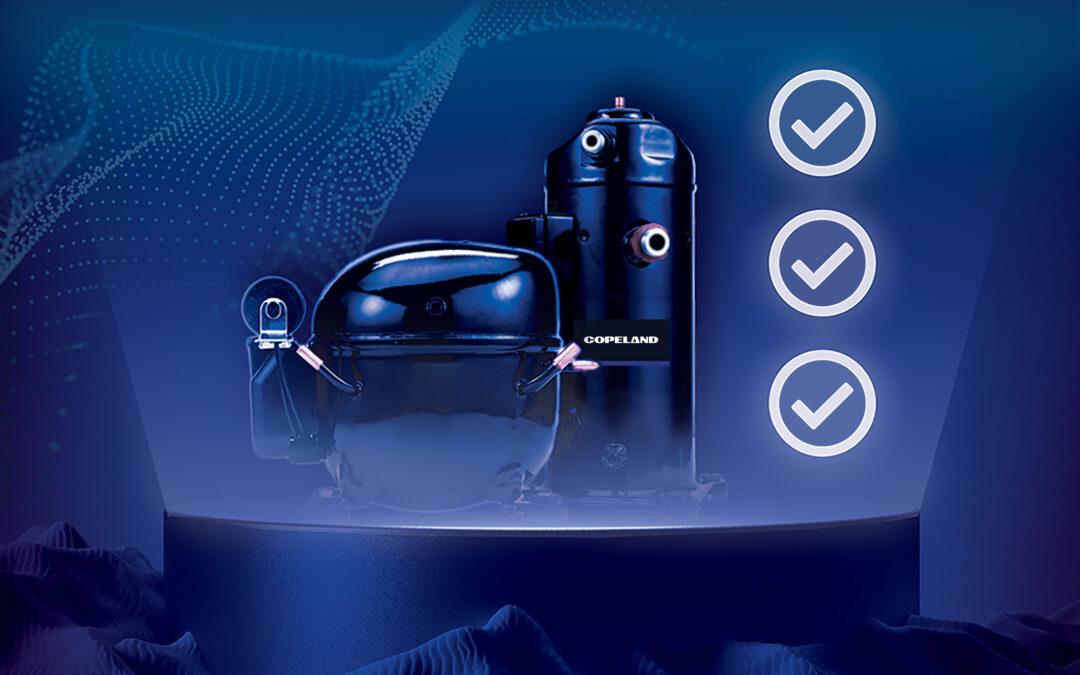*On June 1, 2023 Emerson’s Climate Technologies business became a new standalone company – Copeland. Though our name has changed, we are building on more than a century of HVACR innovation and industry leadership, and Copeland continues to offer the same products, industry stewardship, and learning opportunities you’ve grown to trust. Information found on this webpage posted before June 1, 2023 may contain our old name or branding, but you can be at ease knowing it was created with the knowledge and expertise of Copeland.
While the phase-down of hydrofluorocarbon (HFC) refrigerants is underway globally, federal regulatory uncertainty and state-level actions in the U.S. continue to raise many questions in our industry. Our latest E360 webinar presented the latest developments in this dynamic area in hopes of clearing up some of the confusion. View the webinar in its entirety.

Along with my Emerson colleague, Jennifer Butsch, regulatory affairs manager, I recently presented the latest information on refrigerant regulations and rulemaking. The primary objective of these activities is to reduce the use of HFC refrigerants with high global warming potential (GWP), and at the same time, introduce lower-GWP alternatives. For those of us in the commercial refrigeration and AC industries, this transition impacts many of our most common applications.
Here’s a summary of our discussion.
Kigali Amendment takes effect
To put these matters into their proper context, it’s important first to understand the global regulatory driver of the HFC phase-down, the Kigali Amendment to the Montreal Protocol. This proposal was agreed upon at a meeting of 197 countries in 2016, and has since been ratified into law by more than 65 countries, including European members, Canada and Mexico.
While the U.S. has yet to ratify the Kigali Amendment, its phase-down guidelines went into effect for participating countries as of Jan. 1, 2019. However, this doesn’t necessarily mean its impacts are not being felt in the U.S., particularly in state-level initiatives to meet environmental targets.
California adopts SNAP rules, plans further reductions
While the Environmental Protection Agency (EPA) SNAP Rule 20 has been vacated and Rule 21 remains in litigation, California has adopted these rules into law. Effective Jan. 1, R-404A and R-507A are not allowable in many commercial refrigeration applications, including: supermarket central systems, remote condensing units and stand-alone systems. Essentially, this upholds previous SNAP 20 rulemaking and prevents operators in the state from using high-GWP HFCs. But this is just the first of many steps.
California is also adhering to the longer-term HFC phase-down schedule for commercial refrigeration and AC as outlined in SNAP Rules 20 and 21. In addition, the California Air Resources Board (CARB) has been tasked with reducing HFC emissions 40 percent by 2030 from the state’s 2013 baseline level — a target that’s very much in alignment with the Kigali Amendment’s HFC phase-down recommendations for the United States.
Achieving these levels will require new rulemaking in accordance with CARB’s short-lived climate pollutant (SLCP) reduction strategy. CARB is planning on releasing a final rule toward the end of this year. In the meantime, they will conduct a series of public meetings for both AC and commercial refrigeration stakeholders. Emerson strongly encourages you to participate in these meetings to make sure your questions and concerns are addressed.
Other states join the charge
While California appears to be taking the lead on domestic HFC phase-down efforts, there are also many other states making commitments to climate change initiatives, including the reduction of HFCs.
The U.S. Climate Alliance now includes 21 states; combined they make up 49 percent of the U.S. population and 50 percent of the gross domestic product (GDP). We believe that it is in our industry’s best interest for these states to follow a united course of action, rather than a patchwork of individual state mandates.
Other key webinar takeaways
Jennifer and I also discussed many other important developments pertaining to the use of lower-GWP alternatives, including:
- Applications, availability and GWP ratings of A1, A2L, A3, B2L and natural alternatives
- Update on refrigerant safety standards of A2L and A3 (flammable) refrigerants
- How refrigerant standards affect equipment, applications, building codes and local codes
- Lower-GWP refrigerant impacts on refrigeration architectures
To learn more about these topics, please view this webinar in its entirety.

Electrical component considerations for A2L system safety
Electrical component considerations for A2L system safety As a new refrigerant category in the...

A2L refrigerant regulation updates: what you need to know today
Preparing for the approval and safe use of A2Ls in commercial refrigeration applications The move...

Address Efficiency Mandates with Compression Technologies
Strategies for complying with DOE and ENERGY STAR® in self-contained and remote condensing units...
